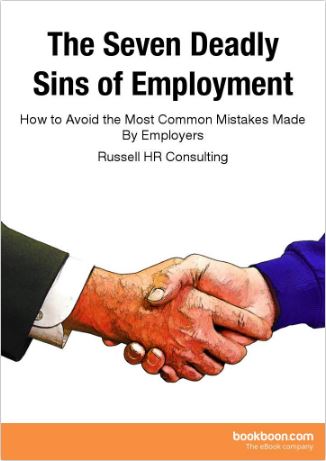Avoiding Conflicts with Employees: “Foresight is Better Than Hindsight”

If you are an HR specialist or a line manager and have had to deal with employee misconduct, you know how damaging such an internal conflict can be, not only to the employee in question but potentially to the entire company. It is, therefore, worth trying to avoid such occurrences from happening in the first place.
One of the most impactful tools for preventing internal conflicts because of employee misconduct is having a high-quality code of conduct: It helps employees understand what is expected of them in terms of conduct and attitude and what the consequences are if they don’t uphold your rules. Here are the most important aspects to consider regarding your very own rule book.
1. Rules should be concrete, precise, and easy to understand
It’s crucial that your employees know exactly what your internal rules mean. Use concrete examples, be succinct, and use a language for your communication that everyone can easily understand.
As an example, take this rule: “Employees are expected to be on our premises at 8:00 am. Multiple late appearances will have a negative influence on the employee’s overall appraisal.” As you can see, the rule raises more questions than it answers: Does walking through the main gate count as being on “the premises”? How many are “multiple”? Is arriving 30 seconds late a “late appearance”? What does “negative influence” mean? Here’s what you could write instead: “Punctuality is of major importance for our business. Be at your desk at 8:00 am sharp. If you’re late three times within a year, you will receive a formal warning letter. If you’re late again, you could get dismissed with immediate effect.”
2. Employees need to know the rules exist and where to find them
You can’t expect people to uphold your code of conduct if they have a hard time finding it. Therefore, you need to make it easily accessible, i.e. by putting it in a public folder on your internal server or handing it out to every colleague as a printed document.
If you want to make sure that people truly understand every single rule, make talking about them an integral part of your onboarding program for new staff where they will also have a chance to tell you if something’s not clear to them. This will not only lead to them internalising your rules from the very beginning but also help you detect rules that a lot of people don’t seem to understand right away: Maybe you need to optimise them for comprehensibility.
3. Establish transparent responsibilities for maintaining and enforcing rules
Your code of conduct shouldn’t be a final product but a living document that gets better by constant optimisations, some of which are the result of constructive employee feedback.
You, therefore, need to have someone or a group of people responsible for maintaining this document – and your staff needs to know who they can contact if they want to give feedback regarding your code of conduct. Moreover, a dedicated person needs to be in charge of communicating important updates to the entire staff.
Other responsibilities include conducting the on-boarding sessions for new employees as well as enforcing rules and leading disciplinary processes. The more transparent you are about who is in charge of the various aspects of your code of conduct, the more trustworthy, fair, and reliable it will feel to your employees.
In our modern working lives where flexitime models, flat hierarchies, and a trust-based corporate culture are being celebrated, setting strict rules seems to be somewhat anachronistic. However, those things don’t necessarily contradict each other: You can be a modern employer who grants his employees a high degree of independence – and at the same time have a clear and comprehensible set of rules that help people understand the framework within which they can roam freely.
Did you like this article? For more information, download the eBook The Seven Deadly Sins of Employment – How to Avoid the Most Common Mistakes Made By Employers by Russell HR Consulting.
More great articles to read:
- 4 Steps to Boost Your Recruitment Success: Steps 1 and 2
- 4 Steps to Boost Your Recruitment Success: Steps 3 and 4
Let us know in the comments below how you like the article or if you have any questions!
[bookboon-recommendations id=”48c17fb8-1500-4890-b073-9f9d00a40451″ title=”You might also find these books interesting:”]



